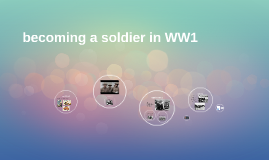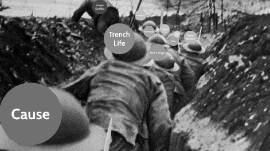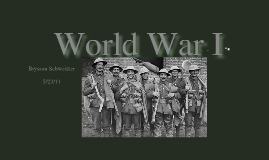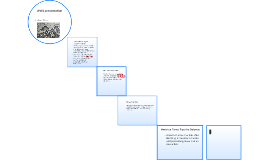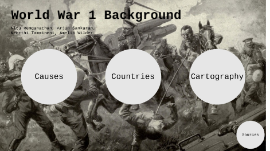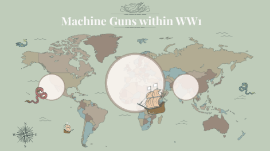ww1 presentation
Transcript: WW1 presentation World War I summary World War I summary World War I began in 1914, after the assassination of Archduke Franz Ferdinand, and lasted until 1918. During the conflict, Germany, Austria-Hungary, Bulgaria and the Ottoman Empire (the Central Powers) fought against Great Britain, France, Russia, Italy, Romania, Japan and the United States (the Allied Powers). Thanks to new military technologies and the horrors of trench warfare, World War I saw unprecedented levels of carnage and destruction. By the time the war was over and the Allied Powers claimed victory, more than 16 million people—soldiers and civilians alike—were dead. Europe by 1914 Almost exactly a century before, a meeting of the European states at the Congress of Vienna had established an international order and balance of power that lasted for almost a century. By 1914, however, a multitude of forces were threatening to tear it apart. The Balkan Peninsula, in southeastern Europe, was a particularly tumultuous region: Formerly under the control of the Ottoman Empire, its status was uncertain by the late 1800s, as the weakened Turks continued their slow withdrawal from Europe. Order in the region depended on the cooperation of two competing powers, Russia and Austria-Hungary. The slumping Austria-Hungary--in which small minorities (Germans in Austria, Magyars in Hungary) attempted to control large populations of restless Slavs--worried for its future as a great power, and in 1908 it annexed the twin Balkan provinces of Bosnia-Herzogovina. This grab for territory and control angered the independent Balkan nation of Serbia--who considered Bosnia a Serb homeland--as well as Slavic Russia. Upstart Serbia then doubled its territory in back-to-back Balkan wars (1912 and 1913), further threatening Austro-Hungarian supremacy in the region. Meanwhile, Russia had entered into an alliance with France--angry over German annexation of their lands in the aftermath of the Franco-Prussian War in 1870-71--and Great Britain, whose legendary naval dominance was threatened by Germany's growing navy. This Triple Entente, squared off against the German-Austro-Hungarian alliance, meant that any regional conflict had the potential to turn into a general European war. Outbreak of World War I Outbreak of World War I .In order to maintain its credibility as a force in the Balkan region (let alone its status as a great power), Austria-Hungary needed to enforce its authority in the face of such an insolent crime. However, with the threat of Russian intervention looming and its army unprepared for a large-scale war, it required Germany's help to back up its words with force. Emperor Franz Josef wrote a personal letter to Kaiser Wilhelm requesting his support, and on July 6 German Chancellor Theobald Bethmann Hollweg informed Austrian representatives that Vienna had Germany's full support. On July 23, the Austro-Hungarian ambassador to Serbia delivered an ultimatum: The Serbian government must take steps to wipe out terrorist organizations within its borders, suppress anti-Austrian propaganda and accept an independent investigation by the Austro-Hungarian government into Franz Ferdinand's assassination, or face military action. After Serbia appealed to Russia for help, the czar's government began moving towards mobilization of its army, believing that Germany was using the crisis as an excuse to launch a preventive war in the Balkans. Austria-Hungary declared war on Serbia on July 28. On August 1, after hearing news of Russia's general mobilization, Germany declared war on Russia. The German army then launched its attack on Russia's ally, France, through Belgium, violating Belgian neutrality and bringing Great Britain into the war as well. The Road to World War I The Road to World War I 1918 World War I ends 1918 World War I ends Germany had formally surrendered on November 11, 1918, and all nations had agreed to stop fighting while the terms of peace were negotiated. On June 28, 1919, Germany and the Allied Nations (including Britain, France, Italy and Russia) signed the Treaty of Versailles, formally ending the war. Over the next four years, the Great War (as World War I was then called) would grow to involve Italy, Japan, the Middle East and the United States, among other countries. More than 20 million soldiers died and 21 million more were wounded, while millions of other people fell victim to the influenza epidemic that the war helped to spread. The war left in its wake three ruined imperial dynasties (Germany, Austria-Hungary and Turkey) and unleashed the revolutionary forces of Bolshevism in another (Russia). In the end, the uneasy peace brokered at Versailles in 1919 kept tensions in check for less than two decades before giving way to another devastating world war. The Great War and Its Impact The Great War and Its Impact






